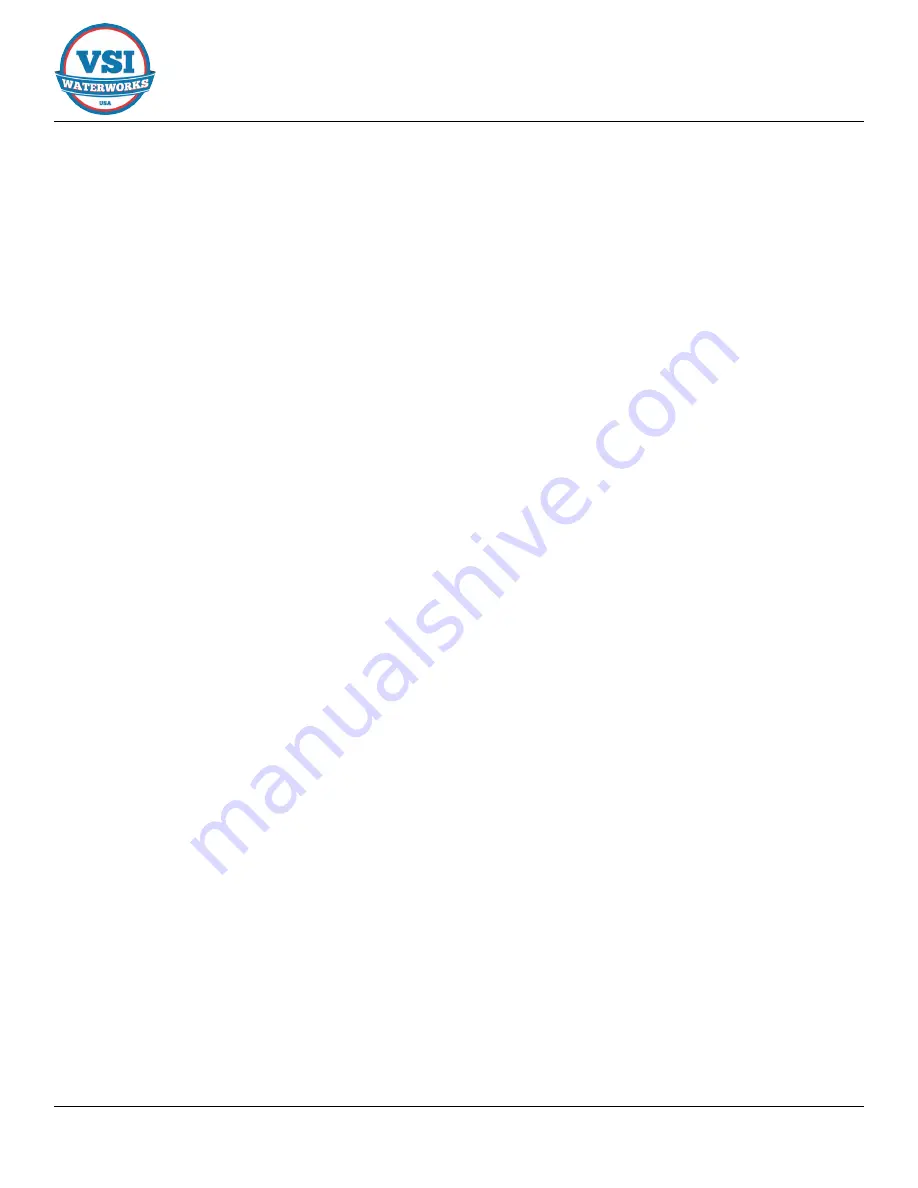
INSTALLATION, OPERATION AND MAINTENANCE
VSI AWWA C508 RUBBER FLAPPER CHECK VALVE
VRSG-3
02-16
© 2014 VSI Waterworks LLC
4
SECTION 1 - GENERAL
Rubber Flapper check valves form a significant component part of many firefighting or water-distribution
systems. Failure of a Rubber Flapper Swing Check Valve in such systems, either caused by faulty installation or
improper maintenance, could result in extensive damage and costly repairs. Problems with or malfunctions of
the Valves caused by faulty installation or improper maintenance can result in extensive and costly unearthing
operations to effectively correct or eliminate the problem. Many Rubber Flapper Swing Check Valves problems
and failures can be traced back to improper handling, storage, installation, operation, or maintenance
procedures.
SECTION 2 - UNLOADING
All valves should be unloaded carefully; a soft sling around the body is recommended to prevent damage to
the valve and its protective coating. Each valve should be carefully lowered from the truck to the ground; it
should not be dropped. Valves should not be lifted or unloaded using chains, slings, or forklift fork(s) engaging
the valve accessories or passing through the valve waterway. In the case of larger valves, forklifts or slings
around the body of the valve or under the skids should be used for unloading. Only hoists and slings with
adequate load capacity to handle the weight of the valve or valves should be used. Hoists should not be should
not be hooked through the seat opening in the body. Failure to carefully follow these recommendations is
likely to result in damage to the valve.
SECTION 3 - INSPECTION PRIOR TO INSTALLATION
Rubber Flapper Swing Check Valves should be inspected at the time of receipt for damage in shipment. The
initial inspection should verify compliance with specifications, direction of opening, size, and operator(s). A
visual inspection of the seating surfaces should be performed to detect any damage in shipment or scoring
of the seating surfaces. Inspection personnel should look for bent rod(s), cracked parts, loose bolts, missing
parts and accessories, and any other evidence of mishandling during shipment. Each valve should be operated
through one complete opening-and-closing cycle in the position in which it is to be installed.
SECTION 4 - STORAGE
Whenever practical, valves should be stored indoors. If outside storage is required, valves should be protected
from the weather, sunlight, ozone, and foreign materials. In colder climates where valves may be subject to
freezing temperatures, it is absolutely essential to prevent water from collecting in the valves. Failure to do so
may result in a cracked valve casting or deterioration of the disc material.
SECTION 5 - INSTALLATION
Instructions supplied by manufacturers should be reviewed in detail before valves are installed. At the jobsite
prior to installation, each valve should be visually inspected and any foreign material in the interior portion of
the valve should be removed. A detailed inspection of the valve as outlined in Sec. 3 should be performed prior
to installation.
Sec. 5.1 Bolts
All bolts should be checked for proper tightness and protected by the installer to prevent corrosion, either with
a suitable paint, by polyethylene wrapping, or other suitable means of corrosion protection.



























